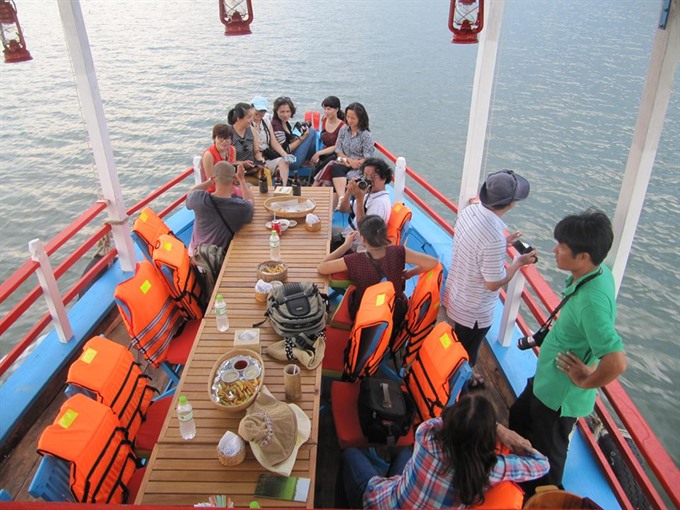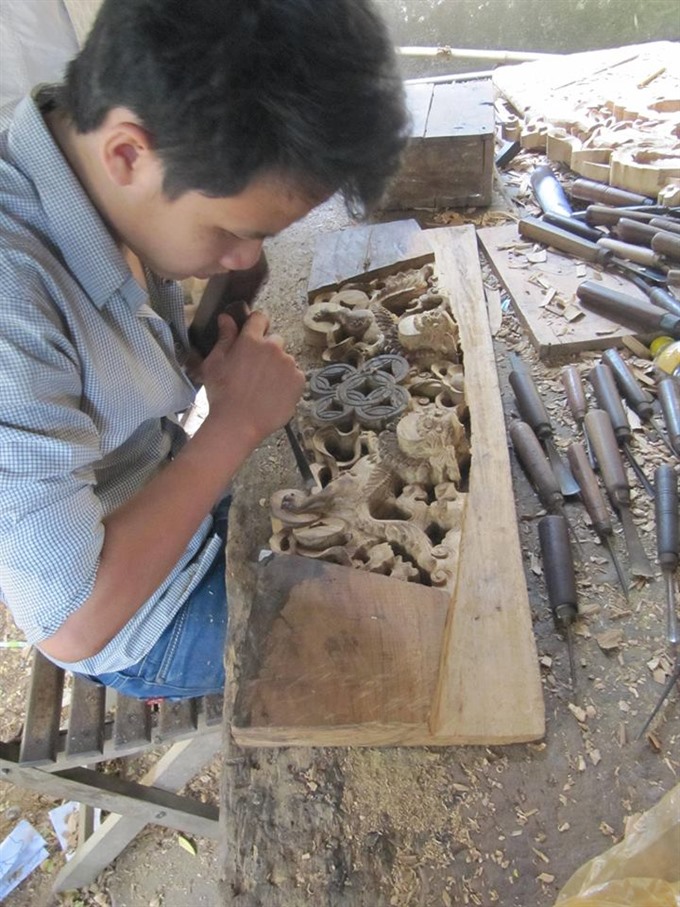 Life & Style
Life & Style

Cẩm Kim Commune on the town’s outskirts is near, yet another world. Separated from the old town by the Thu Bồn River, this peaceful village can be reached by boat or a ten-minute bike ride.
 |
| Traditional craft: Huỳnh Kim Sướng (right) and his son and grandson. His family has made wooden carvings for five generations. |
Hồng Vân
The picture that comes to mind when thinking of Hội An is of magical multi-coloured lanterns lighting up the meandering Hoài River, the town’s signature yellow-painted old houses or the little charming cafés and shops in the old town.
Cẩm Kim Commune on the town’s outskirts is near, yet another world. Separated from the old town by the Thu Bồn River, this peaceful village can be reached by boat or a ten-minute bike ride.
One of the commune’s tourist highlights is Kim Bồng Village, known for its unique religious rituals as well as its carpentry, which was recognised as a national intangible cultural heritage last year.
A stroll or bike ride through the tiny village, only about 40ha in size, reveals greenish rice fields, colourful fruit and flower gardens and local women sitting at their weaving machines.
 |
| Unique experience: Traveling by boat to Cẩm Kim commune on the Thu Bồn River. |
Kim Bồng Village of Cẩm Kim Commune is one of the earliest Hội An villages, to which the carpentry craft was brought in the 15th century from the north and central regions of Nghệ An and Thanh Hóa.
The sounds of carpentry are indeed unmistakable as soon as one steps foot in Kim Bồng Village. The drilling, chiseling and cutting echoe from households, where one can also see delicate carvings of the artisans and hear the history of local carpentry.
 |
| Characteristic artistry: The sounds of carpentry are indeed unmistakable as soon as one steps foot in Kim Bồng Village. The drilling, chiseling and cutting echoe from households, where one can also see delicate carvings of the artisans and hear the history of local carpentry. |
In late 17th century, Hội An was a busy and important port, trading with local and foreign cities and paving the way for craft villages like Thanh Hà (pottery) and Kim Bồng to develop and prosper.
These days visitors to Kim Bồng can visit the eastern part of the village where boats are made, and the western part, which makes carpentry carvings. One can also see the village carpentry products in old town shops.
While carpentry of other localities is greatly influenced by northern culture, with characteristics of feudal times with symbolic patterns or powerful creatures like dragon, Kim Bồng’s wooden products appear influenced more by nature, with carvings of trees or flowers.
 |
| Edge of town: Thu Bồn River. Cẩm Kim Commune offers the peace of a rural area. |
Tourism promotion
The Hội An Department of Trade and Tourism recently introduced a Kim Bồng tour, giving travellers a chance to experience the cultural and religious activities of the traditional craft village.
The tour features destinations such as Ms Quân’s bánh tráng (a traditional Vietnamese dish known as "girdle pancakes"), the Huỳnh Ri ancient house, and the Anh Vũ ecological tourism area, and offers the experience of traditional folk games and the viewing of traditional craft production. The ritual commemorating the founders of carpentry in Cẩm Kim is a particularly unique and interesting practice.
Invariably, with tourism comes change. Kim Bồng now has carpentry production factories, a guest reception centre, and a centre introducing and promoting tours, such as a "Being a Kim Bồng Artisan" tour. Four homestays are also available.
Since 2015, Hội An City has focussed on improving tourism activities in its craft villages. The city will open several sites to tourists after restoring characteristic traditional crafts like ship building and repair, mat weaving and carpentry, according to Deputy Director of Hội An’s Department of Tourism and Trading, Nguyễn Hùng Linh. — VNS